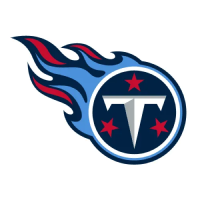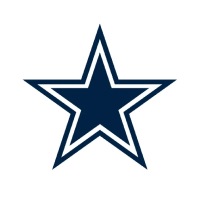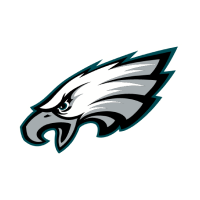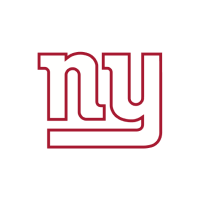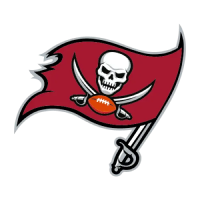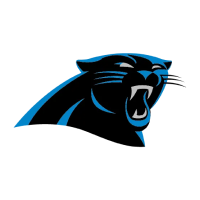With resounding expectations surrounding “America’s Team” seemingly every year, it was more of what didn’t go wrong for Dallas in 2020. Now, it’s on to year two for Mike McCarthy, where his coaching seat will become increasingly hotter if he fails to lead Dallas to the postseason. Prior to the year, people called it a “safe hire,” but at times, McCarthy looked lost. It’s made many people wonder just how good Aaron Rodgers was that he made McCarthy look suitable in Green Bay for 13 seasons—including a Super Bowl victory in 2011.
"Absolutely no change with coach McCarthy, and I’m surprised someone would question Mike," team owner Jerry Jones told 105.3 The Fan in a recent interview. "There’s unprecedented situations that everyone has been in. On top of that, no one is making excuses, but we have some real challenges in the injury category."
Injuries, however, are league-wide, and teams must clear the ever-present hurdle if it plans on not only reaching the postseason but achieving the ultimate goal: a Super Bowl title.
So with that, using our Mock Draft Machine, I looked at which prospects Dallas could target this April when the annual NFL draft rolls around. Here is my seven-round mock, including scheme fit, on each prospect:
Round 1 (No. 10 overall): Caleb Farley, CB, Virginia Tech
I can very well see Jones signing Patrick Peterson to pair with Trevon Diggs—again ignoring the need for fresh talent on the backend—but Farley is the easy choice here, as I’m sure you’ve seen in many other mocks. It just makes too much sense.
Diggs had his rookie struggles, but was a lone bright spot within a historically bad Cowboys secondary. Farley would immediately work as CB1 in new defensive coordinator Dan Quinn’s defense.
How he fits: According to our own Joe Marino, Farley “brings a rare blend of physical traits to the table in terms of size (6-foot-2), length, quickness, fluidity, and athleticism that he pairs with exceptional man coverage skills that make him an exciting NFL prospect.”
Similar to Diggs, Farley touts excellent ball skills. If selected, the combination of the two would provide an exciting corner duo in Dallas for years to come.
Round 2 (No. 42 overall): Daviyon Nixon, IDL, Iowa
Tyrone Crawford is set to enter the open market, a happy sight for Dallas fans. The 31-year-old has failed to produce, much less convince the Cowboys to bring him back. With overall grades of 53.4 and 52.6 from Pro Football Focus in the last two seasons, it looks as if his best years are clearly behind him.
How he fits: Ultimately, the Cowboys lacked punch in the interior of their line. Neville Gallimore had his moments in his rookie campaign and should continue to develop with more snaps, but the addition of Nixon would immediately provide an identity that’s been missing within Dallas’ front for years. The 2020 Big Ten Defensive Player of the Year, Nixon lives in the backfield, consistently plowing through opposing guards with powerful hands stemming from an elite lower half. A former junior college transfer, Nixon served as the anchor along Iowa’s defensive line following the departure of A.J. Epenesa. He eats up double-teams, continues to develop as a pass rusher, and would open up lanes for stud ‘backers Jaylon Smith and Leighton Vander Esch to feast on opposing ball carriers.
Round 3 (No. 74 overall): Richie Grant, S, UCF
It’s a DREAM scenario if Grant falls to the third round, which I don’t think will happen, but a mock is a mock and Grant falls to Dallas here at 74.
Grant is everything you look for within the back end of your defense and has the potential to become a Pro Bowler in his first season—he’s that talented. Following a productive four years at Central Florida, Grant capped his collegiate career with an outstanding week in Mobile at the Senior Bowl, where many—including myself—have him ranked higher than fellow safeties Trevon Moehrig (TCU) and Jevon Holland (Oregon).
https://twitter.com/JimNagy_SB/status/1360333786416893955
How he fits: Over the past half-decade, Dallas has simply ignored addressing the safety position. From the failed trade for Jamal Adams, signings of George Iloka and Ha Ha Clinton-Dix, to passing on Juan Thornhill in 2018, Dallas’ safeties have continued to represent an inept unit within a progressively worsening defense. Pairing Grant with Farley and Diggs in Dallas’ secondary would immediately add high-end talent into a backend lacking any sort of pop in the last couple of seasons.
Round 3 (No. 99 overall): Jordan Smith, EDGE, UAB
The Aldon Smith experiment failed and DeMarcus Lawrence desperately needs a running mate on the opposite side of the line. Enter Smith, a talented prospect from a mid-major that deserves more attention. If Smith attended a school from a Power 5 conference, he wouldn’t slip past the second round. I’m that high on his game.
How he fits: Production usually translates from mid-majors, see Trey Hendrickson from Florida Atlantic last year, and Smith has all the tools in the edge rusher shed. He touts excellent length at 6-foot-5, which he continuously uses to his advantage. Smith has a knack for always being “first” when rushing the passer, meaning he establishes his hands on the opposing lineman before they can, allowing him to rip, club, and swim his way past opposing blockers. In an otherwise weak edge class after the Azeez Ojularis and Gregory Rousseaus of the class, Smith would provide excellent value for a team looking for pop off the edge; exactly what Dallas covets.
Round 4 (No. 115 overall): Amari Rodgers, WR, Clemson
Amari Cooper and CeeDee Lamb present one of the NFL’s top young duos out wide, but you can never have enough weapons—just ask Tom Brady and Patrick Mahomes.
A former 4-star recruit, Rodgers can flat out go and get it. Trevor Lawrence aside, when putting Rodgers’ skill set under the microscope, he consistently works to get open via lightning-quick feet, and veteran route-running skills only seen from wideouts with years of experience in the NFL. Rodgers has that ability as a rookie.
How he fits: Throughout his four seasons at Clemson, Rodgers progressively worked up to become one of the country’s top slot options. He saved his best season for his curtain-call in Death Valley, hauling in 77 catches for 1,020 yards and seven scores. His yards-after-catch (YAC) ability is comparable to the class’ elite in Jaylen Waddle and Rondale Moore, and with his strong frame at just 5-foot-9, it allows him to work both inside and out. Rodgers may have the safest floor of all draft wideouts, and he would be a steal here for Dallas to add to an already budding receiving corps.
Round 4 (No. 139 overall): Tedarrell Slaton, IDL, Florida
Slaton is MASSIVE at 6-foot-6 and 360 pounds, but his frame hides his build. He plays like an individual around 330. That’s scary.
With the prior mentioned Nixon, and Gallimore, Slaton would offer Dallas nice value and depth here in the fourth round with the potential to develop into a starter. According to our own Jordan Reid, Slaton is “ an extremely powerful player at the point of attack… he makes it difficult for double teams to move him off of his spots. He’s a true head-up 0-technique that thrives with maintaining both A-gaps. Slaton wins strictly off of bull rush attempts and it’s a method that’s been highly effective for him to this point in his career.”
How he fits: A professional weight program and development as a pass rusher will do Slaton well. With all the tools and make up to become a high-quality defensive tackle in the NFL, Slaton’s improved conditioning and technique could see him become one of the Cowboys’ top value selections in this year’s draft.
Round 5 (No.179 overall): Marco Wilson, CB, Florida
One of the biggest sleepers in this year’s class, Wilson has all the tools to work as a CB1, in sub-packages, in nickel, in man… you get the point. He’s a big-time riser on my board.
How he fits: Wilson has the ability to play both inside and out, and did so in Gainesville. A rangy prospect with a feistiness in the run game, Wilson was additionally used often in corner blitzes from the short side of the field. He’s shown above-average tackling skills from the edge in open-field situations and has elite closing speed when rarely caught out of position. He has all the makings of a potential top corner, now it’s up to his progression and future defensive coordinator to take off the reins. For him to be available this late in the fifth would be an utter steal for Dallas.
Round 6 (No. 193 overall): Justin Hilliard, LB, Ohio State
Sean Lee’s ship has sailed in Dallas, and his role must be replaced as the SAM linebacker. Hilliard fits the bill to a T. With limited work behind the slew of fellow draft-bound Buckeye linebackers in Baron Browning, Pete Werner, and Tuf Borland, Hilliard used the snaps he did get to his advantage, showcasing his ability to identify the run while trusting his eyes—a must in the NFL as a B-level defender.
How he fits: As the SAM within Quinn’s scheme, Hilliard would not be forced to produce from day one. Working beside Smith and Vander Esch, Hilliard would be allowed to do what he does best: attack the line of scrimmage. With an NFL-ready frame at 230 pounds, Hilliard touts the pedigree and fundamental skills McCarthy looks for in his rookie ‘backers.
Round 7 (No. 232 overall): William Bradley-King, EDGE, Baylor
Alaric Jackson was here as one of the top tackles left on the board, and as much as I could see Dallas adding depth to their offensive line room, I’ll respectfully pass and move to Bradley-King, one of the rawest prospects in this year’s class off the edge.
How he fits: Behind Lawrence, Dallas’ well runs dry with pass-rushing talent. A former standout at Arkansas State, Bradley-King transferred to Baylor, where he finished his collegiate career.
He touts excellent length at 6-foot-3 and has shown the ability to work both with his hand in the dirt or standing up as a 3-4 linebacker. He’s a premier athlete that with proper development could become an every-down starter off the edge.
It’s been a whirlwind of a season in Dallas. From the loss of Dak Prescott to questions abound in the front office, Dallas’ rookie class could provide the step the Cowboys need on their climb back to NFC East supremacy.
Filed In
Related Articles
NFL Draft
Arik Gilbert Doesn’t Need Big Workload To Be A Top NFL Draft Pick
- Aug 22, 2022
NFL Draft
2023 NFL Mock Draft: Marino 1.0
- Aug 22, 2022
Written By









